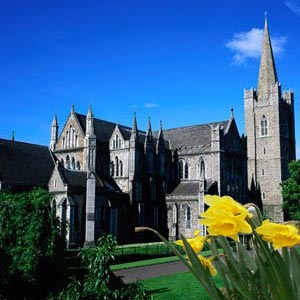St David's Cathedral is one of the historic attractions in Cardiff. Built upon the site of St David's 6th century monastery, the Cathedral has been a site of pilgrimage and worship for many hundred years and remains a church serving the local community. It is believed that St David was born here. As legend goes, his mother gave birth on the spot on the cliffs to the South of the Cathedral, now marked by the ruins of St Nons chapel. The Cathedral has a wonderful oak roof that dates back to the 12th century. Next to the Cathedral are the remains of the ruined Bishops Palace.
St David's was built as a Catholic Church in 1887. It became a cathedral and seat of the Roman Catholic Archbishop of Cardiff in 1916. However the cathedral was restored after heavy bombing in 1941. The St David's Cathedral stands as a good example of medieval woodcarver's art. Look at the decorative roof and the choir stalls that date back to late 15th century. The medieval mericord carvings on the hinged seats in the choir stalls show the decorative severity of early times and the role of humor, even in religion. St David's has large number of tombs and effigies lining the aisles of the Cathedral. Most are the tombs of the past Bishops of St David's and effigies of notable Welsh figures. Bishop Henry Gower, the builder of both Cathedral and the Bishop's palace, has a prominent effigy.
You will also find the tomb of Edmund Tudor, Earl of Richmond and father of King Henry VII, founder of the Welsh-born Tudor dynasty. His tomb is highly decorated with brass figures and heraldic emblems and is honored with a place in the middle of the high alter at St. David's.
St David's Cathedral |

|












